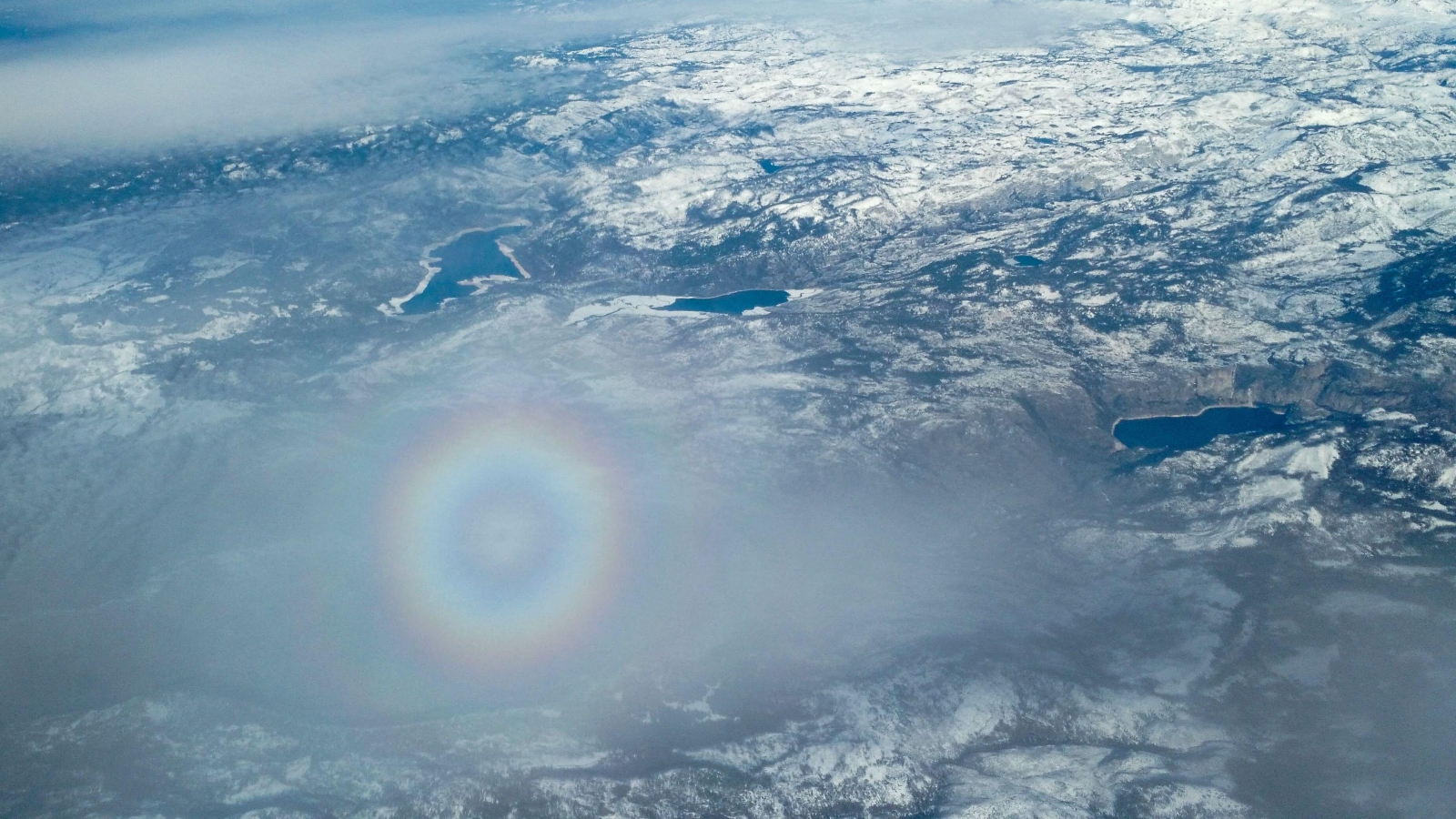QUICK FACTS
Where is it? Guadalupe Island, Pacific Ocean
What’s in the photo? A rainbow ‘glory’ alongside von Kármán vortices
Which satellite took the photo? NASA’s Terra satellite
When was it taken? June 21, 2012
This 2012 satellite photo shows a unique perspective of a rare, rainbow-like phenomenon, known as a glory, that appeared next to a Mexican island just as the landmass spawned a separate series of equally uncommon cloud vortices.
Glories are multicolor light shows similar to rainbows, with one key difference: While rainbows form via a combination of reflection and refraction when sunlight bounces off falling rain droplets and splits into different wavelengths, glories are created by backward diffraction — when light bounces directly off even smaller water droplets in clouds or mist, according to NASA’s Earth Observatory. Because of this, glories only appear exactly opposite the sun, known as the anti-solar point.
This glory appeared adjacent to Guadalupe Island in the Pacific Ocean, around 150 miles (240 km) off the western coast of Mexico, and seemed to stretch for more than 300 miles (480 kilometers). Although there appear to be two distinct glories running parallel to one another, it is a single entity.
In the image, a line of eerily perfect cloud swirls, known as Von Kármán vortices, trail off the island’s southernmost point. These swirling structures are formed when clouds get caught up in an airflow that has been disrupted by a tall landmass, most often above an ocean. In this case, the disruption is caused by a volcanic mountain ridge in the north of Guadalupe Island, which rises more than 4,200 feet (1,300 meters) above sea level.
While the glory and vortices are both only visible because of the thick stratocumulus clouds covering this part of the Pacific, their appearances are not connected to one another.
Related: See all the best images of Earth from space

Normally, glories appear as concentric multicolor circles when viewed from the ground or in the air because the diffracted light radiates outward as it bounces back toward the observer. Even from space, the rainbow-like phenomena often look circular, as was the case when NASA‘s Columbia space shuttle viewed the first glory from orbit in 2003.
However, in this case, the Terra satellite that captured the photo “scans the Earth’s surface in swaths perpendicular to the path followed by the satellite,” Earth Observatory representatives wrote. So in the image, the rainbow streaks are cross-sections of the same circular glory that has been scanned twice by the satellite.
As a result, the rainbow streaks run parallel on either side of the satellite’s trajectory above our planet. The colors in each streak are perfectly inverted compared to the other: From left to right, the rainbow on the left of the image runs from red to blue and the rainbow on the right runs from blue to red.
Until recently, scientists had only ever seen glories on Earth or within the dense clouds of Venus. However, in April, astronomers detected what they believe to be the first extrasolar glory on the distant “hell planet” WASP-76 b, around 637 light-years from our planet, suggesting they might be more common than we realized.
This article was originally published by a www.livescience.com . Read the Original article here. .


